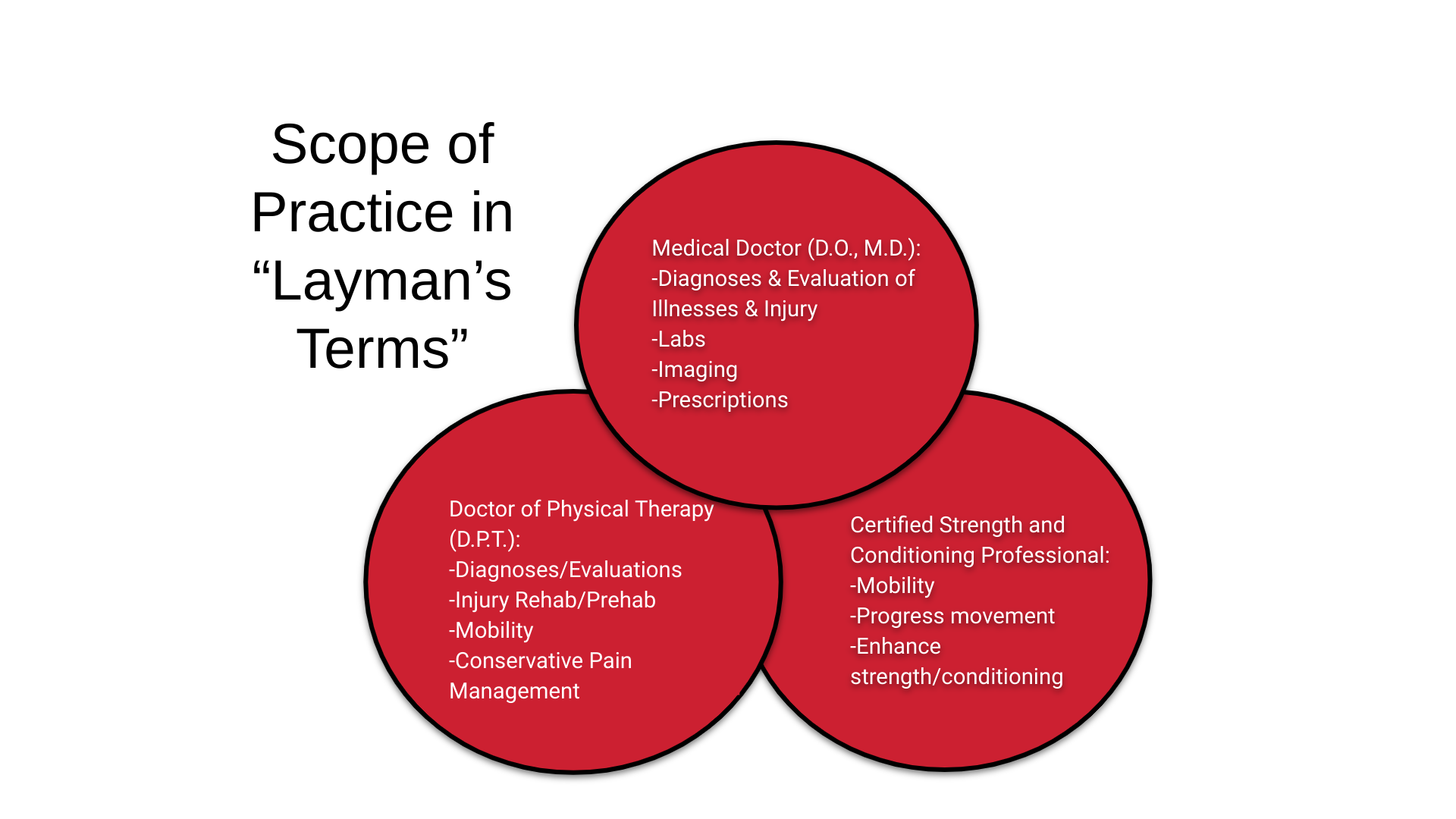It never fails that 1-2 times a week, someone who knows I am a strength and conditioning professional will ask me about some “pain” they have had in a shoulder or knee, or complain to me that they don’t know what to do for a “tweaked back” (i.e. my own mother). While the strength and conditioning profession requires an individual to have a solid understanding of anatomy and physiology, it is not within our scope of practice to diagnose or treat injuries or illnesses. In every profession, the scope of practice is integral for maintaining integrity, ensuring liabilities, and determining parameters for best practices.
These two info-graphics should give you some quick insight into the differences in sports medicine and exercise science related professions:


So here’s what to do if you’re an individual (gym go-er, athlete, human) who has experienced an acute injury, has had pain for >2 weeks, or who may be experiencing signs of an illness:
Go see a medical professional.
Whether that’s a sports medicine doctor, a physical therapist, or your primary care physician, it’s essential you see someone who has the education AND license to diagnose a medical issue. (And honestly, if a strength and conditioning professional tries to sway you against it and tries to “treat” you, RUN AWAY).
I know so many athletes who let an injury get worse because they didn’t want to bother with the time or money to see a medical professional. One of the quickest ways to learn whether your injury can be progressed or would be outside a D.P.T. scope of practice is simply to go see one.
— As of July 2019, 20 states have unlimited direct access for patients to go see a Physical Therapist without a primary care physician referral. (Kentucky is one of them!) If you’re wondering what access is available to you, check that out here.
If you feel more comfortable going to your PCP, by all means, visit them first! The great thing about progressing through that line of action is that your PCP will have your most comprehensive medical history and can assist you in determining if there are any further risk factors for injury or illness.
Communicate with your coach.
If you have been cleared for exercise, medical professionals typically provide parameters for the exercise prescription (both post-surgical and non-surgical). While a sports medicine doctor may be tasked with progressing you to being “pain-free”, your coach is tasked with enhancing your strength and helping you adapt to the lifestyle/athletic goals. It is ESSENTIAL that a coach understand the safety precautions and contraindications that may be associated with an illness or injury before you jump back into an exercise routine.
Be patient with yourself. A lot of us beat ourselves up mentally when we feel physically less able. Take the time to appreciate the little victories (Pain was a 7 now it’s a 4/10?! AWESOME). Fitness is a low trajectory to a distant horizon – it takes consistent effort and there will be set-backs. You are not the abilities or limitations of your own body at any given time. Be patient with yourself and appreciate what you can do each day.
If you want to know more than the listed “layman’s terms” scope of practice, you can go to the links provided on the following page:
Resources:
